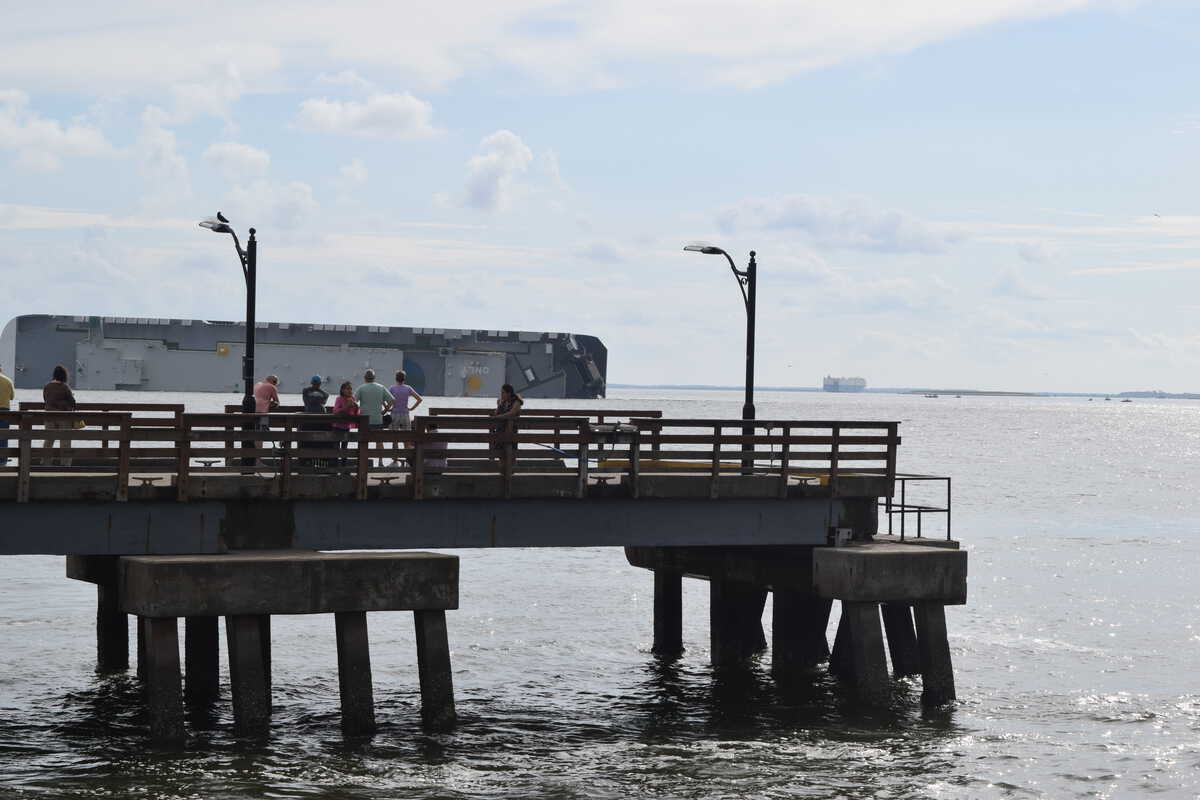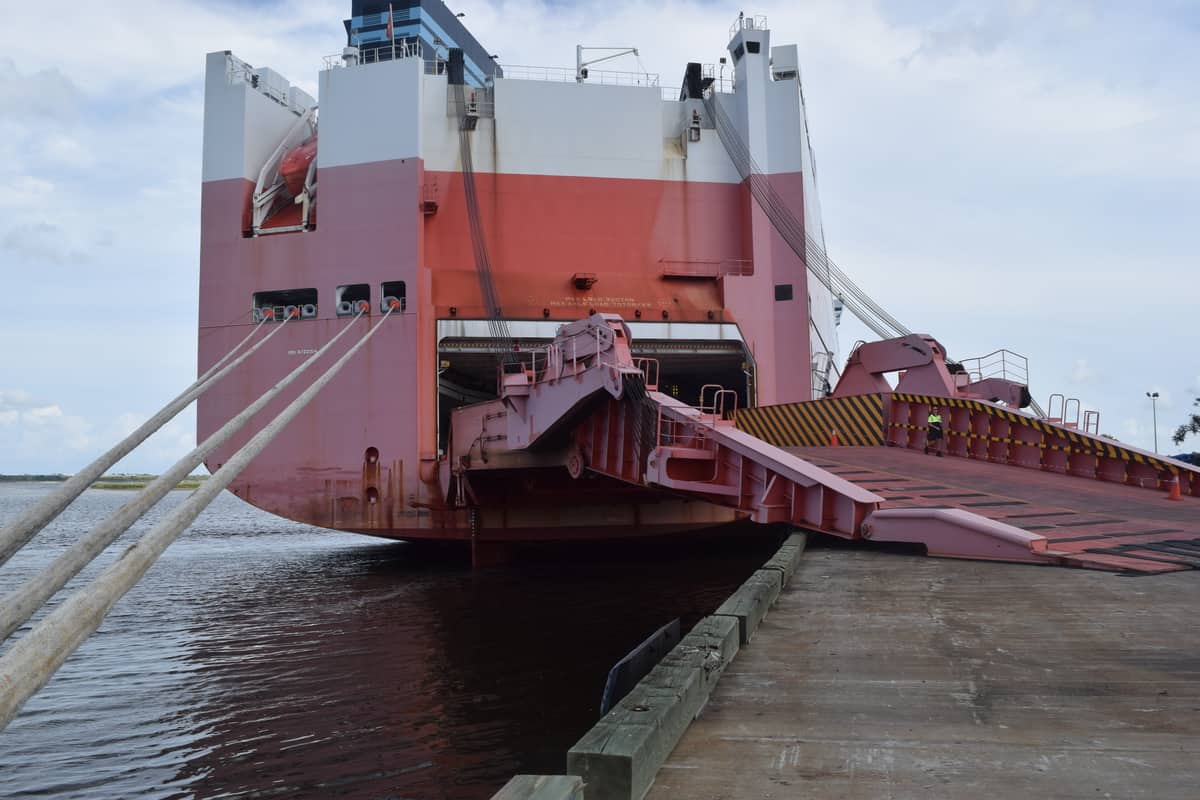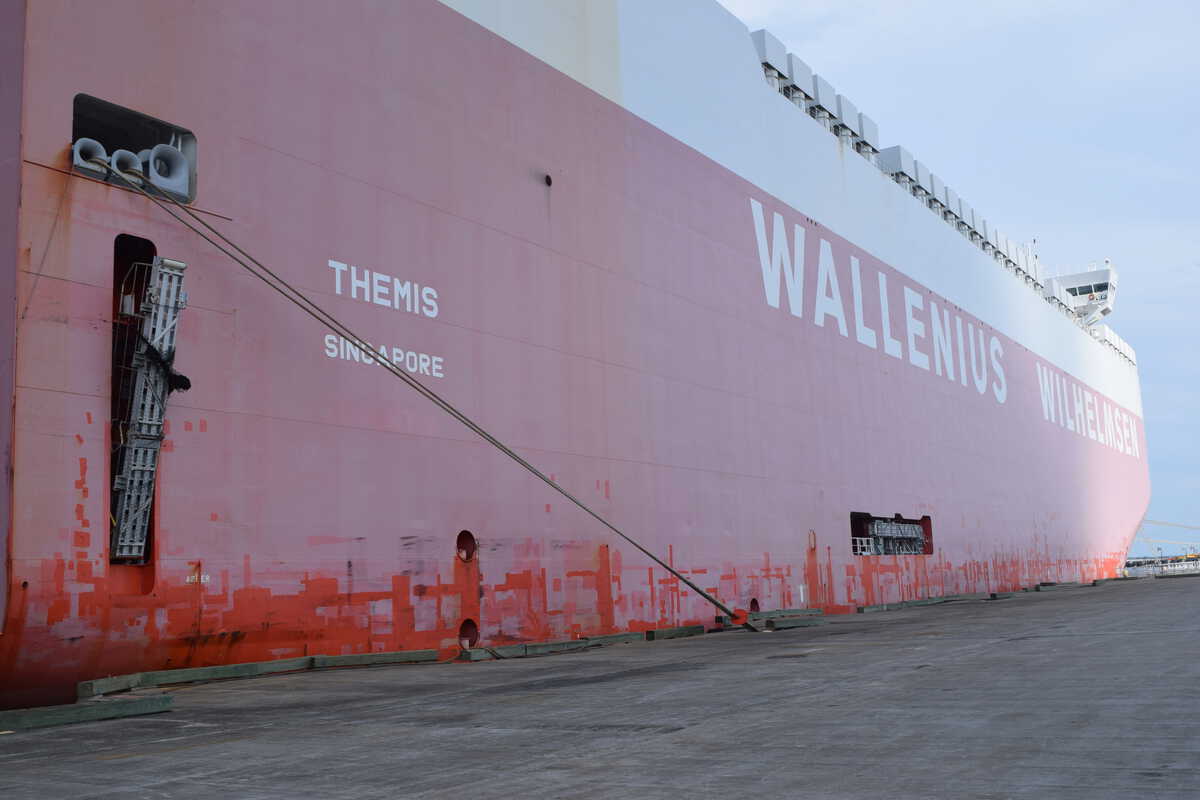While restricted commercial vessel traffic in and out of the Port of Brunswick has resumed following the Sept. 8 capsizing of the Golden Ray, the car carrier remains a tourist draw on St. Simons Island.
A steady stream of visitors to the St. Simons Island pier snapped photos while television reporters broadcast within sight of the Golden Ray in the afternoon of Sept. 12, some 110 hours after the accident occurred.

Meanwhile, vessels, with Coast Guard approval, are making their way in and out of the Port of Brunswick on Colonel’s Island. The Wallenius Wilhelmsen car carrier Themis was berthed at the port that afternoon.
“We do have commercial vessel movements now with captain of the port approval — Coast Guard approval,” said Coast Guard Cmdr. Norm Witt during a press conference at 3:30 p.m. Sept. 12.
Witt said two vessels left port in late afternoon Sept. 11 as a test. “As we moved those vessels out of the port … we were looking to see if there was any movement of the vessel on site,” he said, adding that the results were positive.
Four vessels, including the Themis, were expected to berth at the Port of Brunswick Sept. 12.

“We’ll continue to have commercial vessel movement with Coast Guard approval on a case-by-case basis. The plan for today is we’re going to try and get four vessels inbound. Tomorrow we’ll try to get three vessels inbound,” Witt said, pointing out that the Port of Brunswick typically welcomes 50 vessels a month
“Since the accident, there’s basically been a queue, or backlog, of seven vessels waiting offshore to come in. So if we can successfully implement that plan of four in today and three in tomorrow, we’ll clear out that backlog,” he said.
Meanwhile, a safety zone continues to surround the site of the capsized Golden Ray.
“That is to protect the public and the workers on site. Right now it’s a half nautical mile radius around the site and as things progress we’re looking to shrink that safety zone,” Witt said, adding that he hoped the size of the zone could be reduced later that day.
“I’ve tried to stress that this is a complex case — a large vessel close to the channel — and it’s important that we try and take this methodically — one step at a time,” he continued, explaining that salvage plans are still being developed.
“One of the things we’re trying to do upfront is try to mitigate any pollution concerns. Toward that end, they’re in the process of … identifying and sealing off — or bag in this case — any submerged fuel vents which could be a source of pollution discharge,” Witt said, adding that to date, three vents had been sealed off.
Witt said one option is to pump off fuel on board the Golden Ray. “The best information that we have is there is approximately 300,000 gallons of fuel — and that’s different types of weights of fuel. Again, how much we try and pump off is really as we develop those salvage plans. … There probably will be some tanks that we try and pump off. There are likely going to be some tanks that we try and seal in place.”
Witt said the estimated 300,000 gallons of fuel does not include the gas inside the approximately 4,000 vehicles. He said investigators still were trying to calculate how much fuel was in those vehicle tanks.
Witt said he had no information on the accident investigation because it was being handled by a separate division. He did say the Coast Guard was working on sea and in air. Survey boats were trying “to identify if there is any silting, which could impact the stability of the vessel.”
“There has been a lot of discussion about oil boom. We are utilizing boom. I will say that different recovery techniques … work better under certain conditions. Where this vessel is you get a pretty heavy current in there. It’s also subject to about a 7-foot tidal surge or tidal fluctuation. Those environmental factors are not the most conducive to effective boom,” Witt said. “We are using that where it tactically makes sense. … We also have an on-water recovery assets and we’re actively sending out shoreline assessment teams.”
Both the Coast Guard and Georgia Ports Authority (GPA) were applauded by Georgia Gov. Brian Kemp at the State of the Port event in Savannah on Sept. 12.

“Thankfully, every crew member was saved — remarkably,” Kemp said. “We are back up for business in Brunswick, another remarkable feat.”
Kemp said it has been “a very challenging week or two” for the region with the onslaught of Hurricane Dorian followed by the Golden Ray accident. He added that he “could not be more proud of the teamwork that has been demonstrated.”
GPA Executive Director Griff Lynch called the rescue of all 24 crew members of the Golden Ray “quite a miracle.”
“When I was watching the ship burn, I thought there was no way these four crewmen were going to live,” Lynch said.
Lynch said because of the hurricane and the ship accident, members of the International Longshoremen’s Association local had not worked in two weeks.
“We will see them working this afternoon,” Lynch said.








Erik
It seems like to me a sceem to stableise the sand bar as she fills up with sand and settles . then dredging A deeper seaport . oh and ships burn BunkerC and leave a yellow cloud . global wormers!